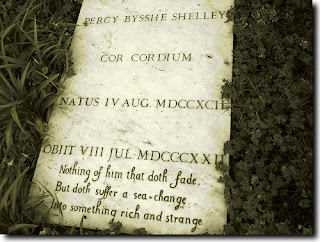North Philadelphia
Connoisseurs of urban areas and urban life know: dilapidation, in urban contexts, has its own kind of glamour and ambiance. There is a richness and a decadent glamour to dilapidated neighborhoods simply from the sense of solid time, decades and even centuries, passing through them, hollowing things out towards a kind of perfection; especially if the architecture is interesting. North Philadelphia is mostly ghettos, mostly dilapidation: but the nicer bits of North Philly are so potent with ambiance that, for Philly Free School, North Philly would always be interesting. Part of the PFS vibe was a certain kind of laissez faire around where we would go in Philly, which was anywhere, at any time. We were not hemmed in by fear; Aughts Philly was not a fearful epoch. So that, when my friends Radio Eris set up shop at 52nd and Cedar in the mid-Aughts, smack in the middle of a North-West Philly ghetto, and called their shared, co-op abode The Eris Temple, it became natural for my routes to begin to include The Temple and its environs. The Eris Temple is where the two Apparition Poems videos were shot; and the site of endless readings, performances, and adventures. It’s not like the violent undercurrents of that particular ‘hood were invisible to us; but we moved within the charmed circle of a germane time which subsisted for flaneurs, art-heads, and misfits. I also have to say that the glamorous dilapidation of North Philly (and West Philadelphia, too) supersedes the closest NYC analogue, which is Brooklyn, most of which is hideously ugly, sans the elegant architecture which distinguishes almost all of Philly, for all time, from other cities. This poem from The Posit Trilogy, Tranny Dream, catches the sense I have that, as the Aughts wore into the Teens, impending doom in the form of a Sword of Damocles hung over all of our heads here, even as I did not manage to write/publish this until 2013:
with a man’s crotch, & find this
unacceptable, & so excuse myself
into an autumn evening in North
Philadelphia, looking for a train
station, finding more nudie bars.
I get trapped in an enclosed space
with a stripper, done with her work
for the night, who counsels me
against taking the train home, that
I can sleep with her backstage at
her bar. I push past, into the night
again, & am assailed on all sides.
The first person orientation of the poem aligns it with, not only the original Posit, but Opera Bufa; what is even more important, on a narrative-thematic level, is the association with autumn, and its harbinger of winter, which amounts to a confrontation with mortality. As in, the way North Philly subsists in 2014, even for all its ambiance (which includes also, a sense of the spectral or apparitional), has become unmanageable for those of us who remember the frisson of being there pre-Great Recession. I wrote the poem from a dream, and from the ‘burbs; pining, as does happen, for a precious era which is now past. I will always be haunted by what Philadelphia was both for me, and for all of my friends and lovers in the Aughts, and by the sense that we managed to capture, from Philly, another, higher world out of the ambiance and architecture here. The second poem I would like to share is more nose on the face about the sort of goings-on which transpired at The Eris Temple in the Aughts, is a sonnet, and bears the simple moniker Eris Temple:
chanteuse, I lay on the linoleum floor
of the front room sans blanket, & thought
I could hack it among the raw subalterns
of the Eris Temple, who could never
include me in their ranks, owing to my
posh education; outside, on Cedar Street,
October gave a last breath of heat before
the homeless had to hit rock bottom again, &
as Natalie lay next to me I calculated
my chances of surviving at the dive bar
directly across from the Temple for the
length of a Jack & Coke, North Philly
concrete mixed into it like so many notes—
Natalie being Natalie Mering. There was once a raucous charm even to the violent undercurrents which create North Philly’s ambiance, and the “concrete” of man’s desire to kill, maim, and dismember man, was never far from my thoughts while I patronized the Temple. Speaking of Temples, Temple University, where I held the University Fellowship from 2006 to 2011, is a North Philadelphia establishment, and is every bit as garishly lurid as the Temple is. What you can see from Anderson Building, where the English Department is located, is quite frightening in its stark attraction-repulsion circuit. To be on campus all day was to be challenged, by a blasted landscape, to find charm in a fracas, and to embrace a kind of alienation built into what Temple had to offer on ocular levels. Why it should be that this dynamic, attraction-repulsion, is so important to an appreciation of the ambient ghettos of North Philly, is that it takes a certain kind of sensibility to be magnetized by sites that are simultaneously attractive and repulsive; and the Neo-Romantics, especially the painting branch of P.F.S., were all heads for this kind of contradictory approach to the city we lived in, and loved.












